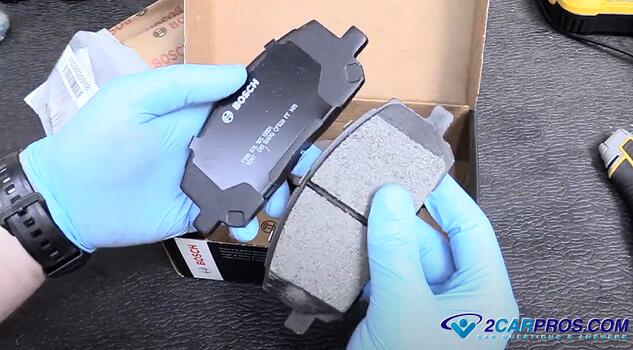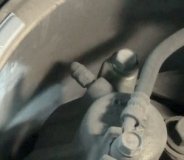Introduction
Brake pads are designed to absorb heat as they create friction against the brake rotor when the brake pedal is activated. These pads ride against either side of the brake rotor which are held in place by the brake caliper and pad carriage, which is typically mounted to the spindle or backing plate. This guide provides an in-depth look at the function of brake pads in automotive applications, suitable for both enthusiasts and professionals.
Hydraulic pressure is provided by the brake system via the brake master cylinder. When the brake system is activated the brake pads are forced against the brake rotor causing it to slow down the motion (kinetic energy) of the car causing, friction and heat. This is why performance vehicles are equipped with cooling ducts on the front and sides, which help channel outside air to cool the brakes and combat the effects of heat buildup.
Construction
Brake pad backing plates are made of metal, there are several different classifications of the brake pad composites for example; organic, semi metallic and ceramic to name a few, the organic pad is used mainly for stock applications. The semi metallic is used for trucks and SUV's while the ceramic pad is used for extended life applications. Each of these pads possess individual wear and usage characteristics for example; organic pads are the most forgiving pad when it comes to brake rotor wear and tend to make less brake noise such as squeaking and grumbling.
Semi metallic pads tend to be more abusive to the rotors but can take more heat then organic pads before brake fade occurs. Ceramic pads are the hardest pad of the group and can wear out the rotors over the life of the brake pad. The advantage of the ceramic pads is the lifespan of the brake pad set is about 20% longer than a regular brake pad. Every brake pad manufacturer has their own mixture of composite material that can vary in cost and quality. This material is bonded or riveted to the pad's metal backing plate.
Here is a list of automotive brake pad material types:
- Organic Brake Pads (Non-Asbestos Organic - NAO): Made from a combination of fibers, rubber, glass, and resins.
- Ceramic Brake Pads: Made from ceramic fibers and other non-metallic materials.
- Low-Metallic NAO Brake Pads: Similar to organic pads but with a small amount of metal (usually copper or steel)..
- Carbon-Ceramic Brake Pads: Made from carbon fiber and ceramic materials.
- Metallic Brake Pads (Full Metallic): Composed entirely of metal materials like iron, copper, and steel.
- Sintered Brake Pads: Created by fusing metallic particles under high pressure and temperature.
- Carbon-Fiber Brake Pads: Made from carbon fibers, offering excellent heat resistance and low weight.
How Long Do Brake Pads Last?
Front brakes typically don't last as long as rear brakes because they take up most of the job of stopping the car, (up to 75%) and they also are the first to overheat. Depending on driving habits and the design of the car front brake pads should last between 30,000 and 45,000 miles in most cases. Other brake pad problems can occur as well such as pad material cracking, glazed, contaminants such as grease or brake fluid which will require replacement as well. Here are guides to help you see how to do a typical front disc, or rear disc brake job:
Most brake pads are equipped with a built in "screamer" which is designed to make a slight squeaking noise when the brake are applied, but they have also been known to work the opposite way as well, squeak when rolling and then stop when the brakes are applied. Some high end European cars have an electronic sensor inserted into the brake pads to warn you of the wear by illuminated a brake warning light on the instrument cluster.
How Much Do They Cost?
If you were to have a brake job done that include new pads and rotors at a repair garage or dealer it would typically cost between $345.00 and $530.00 an axle, (excluding exotic cars). You can get pads and rotors for about $130.00 to $170.00 on Amazon or the auto parts store. Hybrid or electric vehicles will go much longer on a set of brake pads because the electric motor does most of the stopping to recharge the batteries. You can use the Repairpal.com cost estimator to get a close estimate of a brake service for your car in your area.
How Do Brake Pads Fail?
- The most poplar problems with brake pads is simple wear due to usage which is normal.
- Uneven brake pad wear is caused by a brake caliper slide that has frozen.
- Overheated: This happens when the brakes are used in excess such as, racing, driving down a mountain road or towing a trailer.
- Crystallization: This condition will cause diminished braking ability, squeaking and grumbling which is a side effect of the pads being over heated.
- Brake Fade is a condition where the brake pads are at their full heat exchange capabilities and cannot hold additional heat, when this happens the brakes stop working even though a good brake pedal is present.
- Delamination is a problem cheaper brake pads can have as the brake lining material will become dislodged from the metal backing plate, which can lock up the wheel or cause the backing plate to contact the rotor, (metal to metal).
Brake Dust
Typically organic brake pads leave less visible dust than semi metallic or ceramic brake pads, which can leave a dark colored hue on the rims that is more prevalent on the front rims than the rear rims. Brake dust is health hazard if ingested, so caution should be used when dealing with brake pads.
Conclusion
Brake pads are a vital component in automotive safety, directly influencing a vehicle's ability to stop effectively. Being informed is your best defense when choosing brake pads types that can meet the requirements of your particular application.
Credits
This guide knowledge base was created by the 2CarPros Team, and by Ken Lavacot: Automobile repair shop owner and certified master automobile technician of over 30 years. If you have question or need help please ask one of our experts we are happy to help. Please visit our 2CarPros YouTube Channel for additional car repairs.




